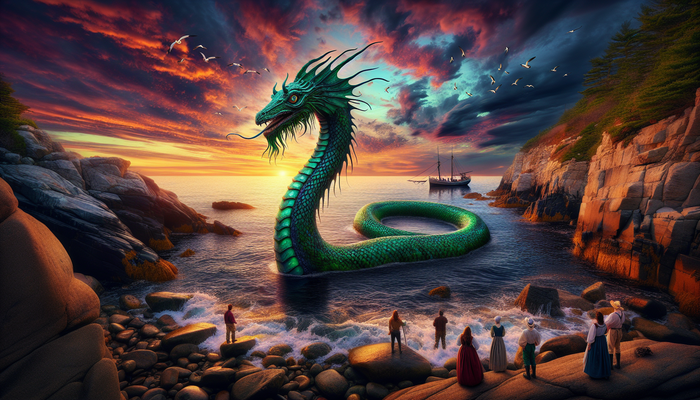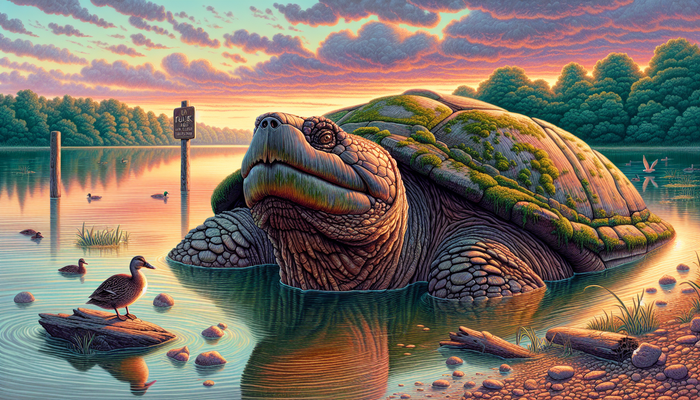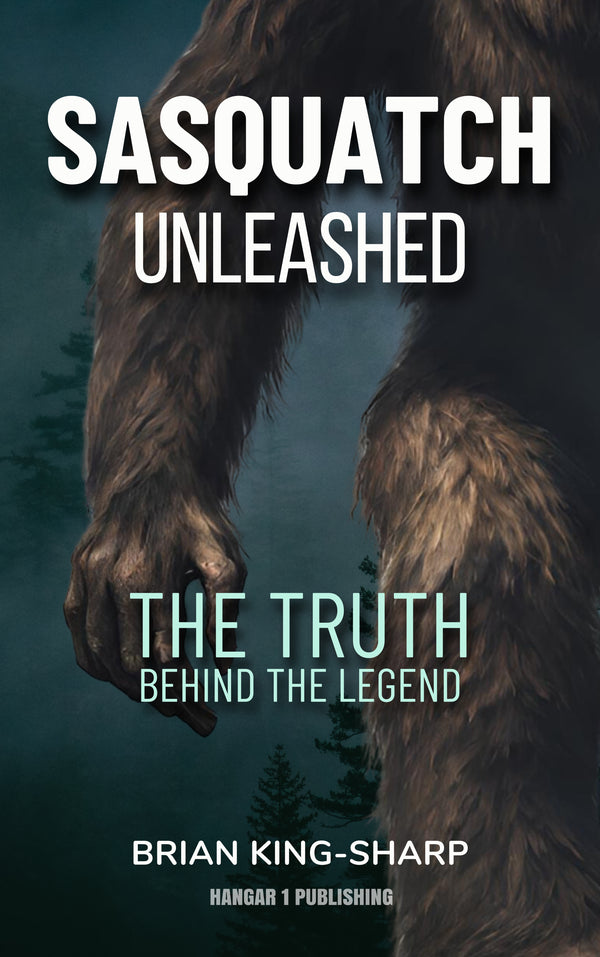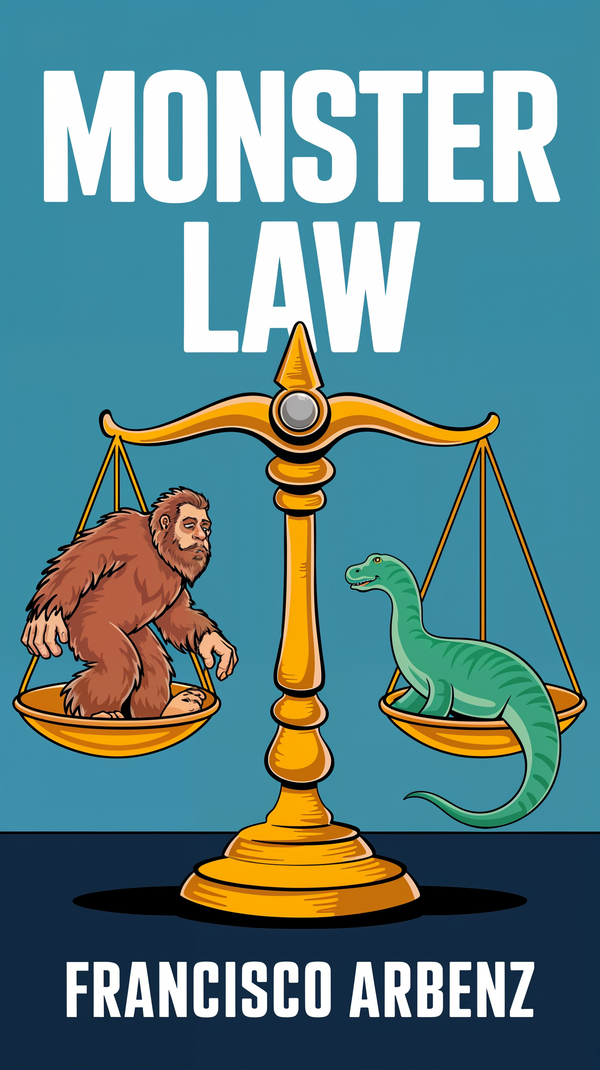Bigfoot Sightings Across North Carolina's Diverse Landscapes

By Oliver Bennett, Cryptozoologist
In the misty mountains and lush forests of North Carolina, a legend looms large, captivating the imaginations of residents and visitors alike. Bigfoot, the elusive, ape-like creature said to roam the wilderness, has left an indelible mark on the Tar Heel State, with sightings reported from the rugged Appalachian Mountains to the sprawling coastal plains. As a researcher and scholar of cryptozoology, I, Oliver Bennett, have long been fascinated by the enduring mystery of Bigfoot and the rich history of encounters woven into North Carolina's diverse landscapes.
For decades, North Carolina has been a hotbed of Bigfoot activity, with countless eyewitness accounts, mysterious footprints, and tantalizing pieces of evidence pointing to the creature's presence. From the dense thickets of the Uwharrie National Forest to the misty peaks of the Blue Ridge Mountains, the state's varied terrain provides the perfect habitat for a large, undiscovered primate to thrive. It is this very diversity that has made North Carolina a prime location for Bigfoot enthusiasts and researchers, each hoping to unravel the mystery that has captivated the public's imagination for generations.
The Uwharrie National Forest: A Bigfoot Hotspot
At the heart of North Carolina's Bigfoot lore lies the Uwharrie National Forest, a vast expanse of rugged wilderness spanning over 50,000 acres in the central part of the state. This densely forested region has long been considered a Bigfoot hotspot, with numerous sightings and encounters reported over the years. One of the most notable incidents occurred in August 2017, when the Bigfoot 911 research group claimed to have had a dramatic encounter with the creature in McDowell County, which lies within the Uwharrie National Forest.
According to John E. Bruner, the leader of the Bigfoot 911 group, he and his team were out in the woods setting up glow sticks when they heard movement and spotted a large, bipedal creature covered in shaggy hair emerge from the trees. Bruner described the creature as having a "solid black face with no hair on it" and noted that it took several powerful strides before disappearing back into the forest. This sighting, while not conclusive proof of Bigfoot's existence, added to the growing body of evidence suggesting that something strange and unexplained was lurking in the Uwharrie's dense woods.
The Eldorado Outpost: A Hub for Bigfoot Enthusiasts
The Uwharrie National Forest's reputation as a Bigfoot hotspot has been further bolstered by the presence of the Eldorado Outpost, a popular outdoor supply store located near the forest's edge. The outpost has become a hub for Bigfoot enthusiasts, offering a wide range of Bigfoot-themed merchandise and serving as a gathering place for those interested in the creature's lore. Chris Cagle, the store's owner, has been a vocal proponent of Bigfoot research in the area, noting that the Uwharrie region has been "on the map" for Bigfoot sightings ever since the release of the now-famous "Squeaky Thermal" footage captured by researcher Michael Greene.
Greene, a former Army tank commander and fraud investigator, has spent years trekking through the Uwharrie wilderness in search of evidence of Bigfoot's existence. His thermal footage, which appears to show a large, white figure grabbing a candy bar from a stump before retreating into the woods, has become one of the most well-known pieces of Bigfoot evidence from the region. While skeptics have dismissed the footage as inconclusive, it has nonetheless fueled the fires of speculation and inspired countless others to venture into the Uwharrie's rugged terrain in search of the elusive creature.
Bigfoot Sightings Across North Carolina's Diverse Regions
But the Uwharrie National Forest is far from the only place in North Carolina where Bigfoot sightings have been reported. Across the state's diverse regions, from the rolling hills of the Piedmont to the sandy shores of the Coastal Plain, eyewitnesses have come forward with tales of strange, ape-like creatures lurking in the shadows. In 2015, a tourist visiting the Asheville area in the state's western mountains claimed to have captured video footage of a Bigfoot-like creature walking through the woods. The video, while grainy and inconclusive, sparked a renewed interest in Bigfoot tourism in the region, with many flocking to the area in hopes of catching a glimpse of the legendary beast.
Similarly, in 2019, a resident of Hickory, a city in the state's Piedmont region, reported a sighting of a large, black, ape-like creature near his home. Doug Teague, the eyewitness, described the creature as being incredibly tall and covered in dark, shaggy hair. While Teague's sighting, like many others, lacked concrete evidence, it served as a reminder that Bigfoot sightings were not confined to any one particular area of the state, but rather spanned its diverse landscapes.
Historical Accounts of Bigfoot in North Carolina
Perhaps one of the most intriguing aspects of North Carolina's Bigfoot lore is the fact that sightings and encounters have been reported for well over a century. Historical accounts dating back to the 1800s describe strange, ape-like creatures roaming the state's wilderness, long before the term "Bigfoot" had even entered the popular lexicon. One particularly notable incident occurred in the 1870s in Craven County, located in the state's Coastal Plain region. According to newspaper reports from the time, a "swamp monster" approximately five feet tall attempted to abduct two African American children, only to be thwarted by their quick-thinking father.
While the Craven County incident may seem like an isolated case, it is far from the only historical account of Bigfoot-like creatures in North Carolina. In the early 20th century, stories of a "monkey man" or "hairy man" circulated in the western part of the state, further cementing the idea that something strange and unexplained had long been a part of the region's folklore. These historical accounts, while often dismissed as mere legends or tall tales, provide a fascinating glimpse into the enduring mystery of Bigfoot and its deep roots in North Carolina's cultural heritage.
The Legend of Knobby
One of the most famous Bigfoot legends in North Carolina is that of "Knobby," a creature said to roam the woods around South Mountain State Park in Cleveland County. Sightings of Knobby date back to the 1970s, with locals reporting encounters with a large, hairy, ape-like creature that seemed to defy explanation. In 2010, the legend of Knobby gained new life when a local man named Tim Peeler claimed to have had a face-to-face encounter with the creature, even going so far as to chase it off with a stick. While Peeler's account was met with skepticism by some, it nonetheless reignited interest in the Knobby legend and sparked a new wave of Bigfoot tourism in the area.
Exploring North Carolina's Bigfoot Lore
For those seeking a more in-depth exploration of North Carolina's Bigfoot lore, the Cryptozoology & Paranormal Museum in Littleton is a must-visit destination. Founded by Stephen Barcelo, a self-described cryptozoologist, the museum is dedicated to the study of creatures and phenomena not recognized by traditional science, with a particular focus on Bigfoot. Visitors to the museum can explore a wide range of Bigfoot-related artifacts and evidence, including footprint casts, photographs, and other purported proof of the creature's existence.
In addition to its extensive collection, the Cryptozoology & Paranormal Museum also offers guided "Bigfooting" excursions, allowing visitors to venture into the surrounding wilderness in search of evidence of the creature's presence. These excursions, led by experienced researchers and enthusiasts, provide a unique opportunity for visitors to immerse themselves in the world of Bigfoot research and to experience firsthand the thrill of the hunt.
The Debate Over Bigfoot's Existence
Despite the numerous sightings and encounters reported over the years, the scientific community remains largely skeptical of Bigfoot's existence. The lack of conclusive physical evidence, such as a body or DNA sample, has made it difficult for researchers to definitively prove that the creature is real. Skeptics argue that many Bigfoot sightings can be explained by misidentification of other animals, such as bears or large primates, or by deliberate hoaxes designed to generate publicity or financial gain.
However, the absence of definitive proof has not deterred dedicated Bigfoot researchers from continuing their quest for answers. Organizations like the Bigfoot Field Researchers Organization (BFRO) and the North American Wood Ape Conservancy have been actively investigating Bigfoot sightings and collecting evidence across North Carolina and the rest of the country for decades. These groups employ a variety of techniques, from traditional fieldwork and eyewitness interviews to more advanced methods like DNA analysis and remote camera traps, in their efforts to uncover the truth behind the Bigfoot mystery.
Balancing Research and Environmental Responsibility
One of the challenges facing Bigfoot researchers is the need to balance the pursuit of evidence with a respect for the environment and the creatures that inhabit it. Many of the areas where Bigfoot sightings have been reported, such as the Uwharrie National Forest and the Great Smoky Mountains, are ecologically sensitive and home to a wide variety of plant and animal species. As such, researchers must take care to minimize their impact on these fragile ecosystems and to avoid disturbing or harming any wildlife they may encounter in the course of their investigations.
Bigfoot's Impact on North Carolina's Culture
Despite the ongoing debate over Bigfoot's existence, there is no denying the creature's impact on North Carolina's cultural fabric. Bigfoot has long been a staple of local folklore and literature, inspiring countless stories, songs, and works of art. From the haunting ballads of the Appalachian Mountains to the colorful tales told around campfires in the Piedmont, Bigfoot has captured the imaginations of generations of North Carolinians and become an integral part of the state's rich storytelling tradition.
This cultural fascination with Bigfoot is perhaps best exemplified by the numerous festivals and events held throughout the state each year. In Littleton, the annual Bigfoot Festival draws thousands of visitors from across the country, offering a wide range of Bigfoot-themed activities and attractions, from guided nature walks and research presentations to live music and vendor booths. Similarly, the town of Marion hosts its own Bigfoot festival each fall, celebrating the creature's lore and its enduring place in North Carolina's cultural heritage.
Beyond these organized events, Bigfoot has also made its way into popular culture, with references to North Carolina's sightings and encounters appearing in books, movies, television shows, and other media. From the classic 1972 film "The Legend of Boggy Creek" to more recent works like the "Mountain Monsters" television series, Bigfoot has proven to be an enduring source of fascination and inspiration for storytellers and audiences alike.
The Future of Bigfoot Research in North Carolina
As Bigfoot research continues to evolve and new technologies emerge, the future of the field in North Carolina looks bright. Researchers are increasingly turning to advanced tools like drones, trail cameras, and thermal imaging devices to aid in their search for evidence, allowing them to cover larger areas and gather more detailed data than ever before. Additionally, advances in DNA analysis and other scientific techniques hold the promise of potentially identifying Bigfoot through genetic evidence, should a sample ever be obtained.
However, as with any field of research, there are also challenges and ethical considerations to be addressed. Bigfoot researchers must navigate a complex web of legal and social issues, from obtaining permits for fieldwork in protected areas to engaging with local communities and respecting cultural traditions. Additionally, the potential implications of definitively proving Bigfoot's existence are vast and far-reaching, raising questions about how such a discovery would be handled and what measures would be necessary to protect a newly recognized species.
The Enduring Allure of the Bigfoot Mystery
Despite these challenges, the allure of the Bigfoot mystery continues to draw researchers and enthusiasts to North Carolina's forests and mountains, each hoping to be the one to finally unravel the enigma that has captivated the public's imagination for so long. As I reflect on my own journey as a Bigfoot researcher and the countless hours I have spent poring over historical accounts, analyzing purported evidence, and exploring the state's rugged wilderness, I am struck by the enduring power of this legend and its ability to inspire wonder and curiosity in even the most skeptical of minds.
In the end, perhaps the true value of the Bigfoot mystery lies not in the prospect of a definitive answer, but in the very act of seeking and questioning, of pushing the boundaries of what we know and what we believe to be possible. Whether Bigfoot is ultimately proven to be a flesh-and-blood creature or a figment of our collective imagination, the search itself has undoubtedly enriched our understanding of the natural world and our place within it, and will continue to do so for generations to come.
As I sit in my study, surrounded by the books, maps, and artifacts that have fueled my lifelong fascination with the unexplained, I cannot help but feel a sense of gratitude for the role that North Carolina has played in my own journey of discovery. From the misty peaks of the Blue Ridge to the dark waters of Lake Norman, this state has proven to be a treasure trove of mysteries and wonders, each one inviting us to look beyond the veil of the ordinary and to embrace the extraordinary.
And so, as the sun sets over the Uwharrie National Forest and the creatures of the night begin their ancient dance, I find myself once again drawn to the mystery that has captivated me for so long. Whether Bigfoot is out there, watching from the shadows, or simply a manifestation of our deepest hopes and fears, I know that the search for answers will continue, driven by the unquenchable human thirst for knowledge and the enduring power of the unknown. And I, for one, will be there, following the footsteps of the legend, wherever they may lead.
From Bigfoot to UFOs: Hangar 1 Publishing Has You Covered!
Explore Untold Stories: Venture into the world of UFOs, cryptids, Bigfoot, and beyond. Every story is a journey into the extraordinary.
Immersive Book Technology: Experience real videos, sights, and sounds within our books. Its not just reading; its an adventure.



























